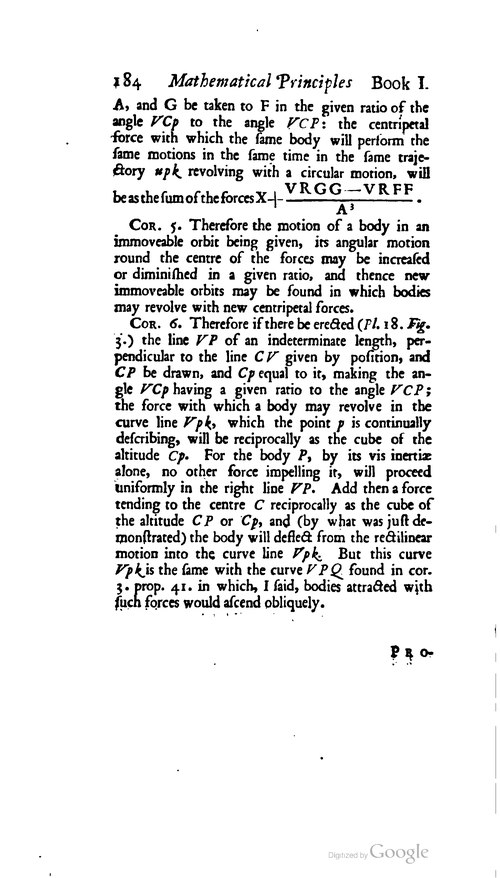A, and G be taken to F in the given ratio of the angle VCp to the angle VCP: the centripetal force with which the ſame body will perform the ſame motions in the ſame time in the ſame trajectory mpk revolving with a circular motion, will be as the forces .
Cor. 5.. Therefore the motion of a body in an immovable orbit being given, its angular motion round the centre of the forces may be increaſed or diminiſhed in a given ratio, and thence new immovable orbits may be found in which bodies may revolve with new centripetal forces.

Cor. 6. Therefore if there be erected (Pl. 18. Fig. 3.) the line VP of an indeterminate length, perpendicular to the line CV given by poſition, and CP be drawn, and Cp equal to it, making the angle VCp having a given ratio to the angle VCP; the force with which a body may revolve in the curve line Vpk, which the point p is continually deſcribing, will be reciprocally as the cube of the altitude Cp. For the body P, by its vis inertiæ alone, no other force impelling it, will proceed uniformly in the right line VP. Add then a force tending to the centre C reciprocally as the cube of the altitude CP or Cp, and (by what was juſt demonſtrated) the body will deflect from the rectilinear motion into the curve line Vpk, But this curve Vpk is the ſame with the curve VPQ found in cor. 3. prop. 41. in which, I ſaid, bodies attracted with ſuch forces would aſcend obliquely.

